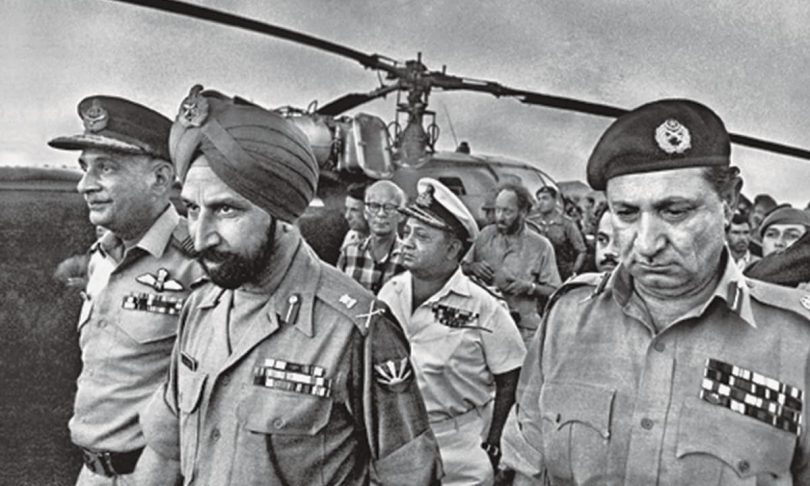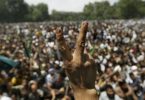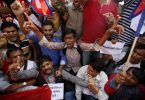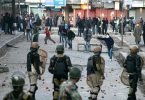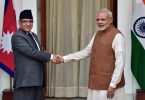World leaders, scholars, and practitioners have often chastised Pakistan of her anti-India rhetoric. The country’s military establishment has been alleged for trying to sabotage the even otherwise half-hearted peace initiatives. Furthermore, Pakistan’s attempts of revisionism in South Asia have been met with severe criticism. It is hence important to first understand the reasons behind Pakistani perceptions of India.
History is a force to reckon with and has a bearing on the psyche of individuals and nations alike. Pakistan’s narrative about India has formed by past occurrences of rancour, wars, and internal meddling. It becomes all the more important to shed some light on the important events that took place ever since the inception of both sovereign states through a series of articles.
Although the Kashmir dispute lies at the heart of Indo-Pak acrimony, this write-up will look at the ill-fated episode of 1971: the breakaway of East Pakistan. This is because the debacle has had a lasting impact on Pakistan’s strategic thoughts regarding India. Albeit, there were many grave internal factors which led to the birth of Bangladesh in 1971 but the massive Indian intervention is not only well documented but well celebrated too. Hence, this piece will only focus on Indian involvement in the breakup during the last few years of a United Pakistan.
Indian Gimmickry and Mujib’s Ascendancy
The trajectory of East-West relations took a turn for the worst after the 1965 war. The once powerful Ayub Khan began to lose grip on the country. The Eastern Wing began to show more activism; strikes and riots became a norm. The Indian role became more pronounced. Let’s start from a conspiracy which had far-reaching effects on Pakistan: the Agartala Conspiracy. The results of this intrigue set stage for things to come. Apparently, it was not handled properly; Sheikh Mujib’s release was deemed a fatal error and according to many it derided the truth behind the conspiracy. However, a closer study of the milieu will make things clear.
Like any clever enemy, India orchestrated intrigues against Pakistan. Agartala is a border town on the Indian side East of Bengal in the Indian state of Tripura. It was discovered in December 1967 that a group of Bengali politicians, civil servants and military personnel were in contact with Indian authorities ostensibly to kill Ayub Khan, topple the government and liberate an area to establish an independent state in East Pakistan. The Indians were later identified as P.N.Ojha, the First Secretary at the Indian High Commission, Lt Col Misra, and Major Menon. This should not sound bizarre, for India’s links with the East Pakistani politicians were well known. Even Mujib later admitted that he had contacts with Indians. There are two pieces of evidence that cannot be refuted. One is the all-famous book by a former RAW operative, Ashoka Raina. His book namely Inside RAW clearly alludes to the Agartala conspiracy. A quote of Mrs Kohinoor Hussain, wife of Lt Commander Moazzam Hussain bears testimony to the veracity of the very conspiracy. The quote is as follows:
“Dearest Husband ….. You are no longer with me. I remember your contribution towards the cause of independent Bangladesh. I remember how you came to Dacca from Karachi on leave under a pseudonym, met P.N Ojha, First Secretary Indian Embassy, at the border at Agartala along with other Indian and Bangladesh officers. You negotiated with Indian authorities for arms and other kinds of help….” Similarly, while handing over command of 14 Division to Major General Khadim Hussain Raja, Major General Muzaffaruddin, explained the Agartala conspiracy in a nutshell. Muzaffaruddin told Khadim “Sheikh Mujib Ur Rehman was genuinely implicated. Some Bengali troops were to launch surprise attacks at night and capture quarter guards and armouries of the West Pakistani military units. These units would be disarmed and confined to the barracks as prisoners of war….. The government of India would assist in various ways, such as banning over-flights from West Pakistan.”
There are evidences galore as regards this conspiracy. However, the way it was tackled left a lot to be desired. Indeed, Mujib was a notorious figure by all counts, but implicating him while he was in jail looked a bit eccentric. After involving him in the case, he was released and the case was abandoned. There were reasons to release Mujib however, and it made him the unchallenged leader from East Pakistan. Before going further, let’s discuss Mujib’s infamous 6 points for regional autonomy. A summary of the 6 points is as follow:
- Election should be held on the basis of adult franchise;
- Foreign affairs and defence should be under the centre;
- Currency should be under regional reserve banks. Separate fiscal and monetary policies;
- The centre shall not have the power to raise taxes;
- States shall have a right to form and maintain para-military and territorial forces
- Separate foreign trade account for federating states.
The above-mentioned points became the hallmark of the Awami league and naturally Sheikh Mujib. Why was Mujib released over the Agartala Conspiracy case? Ayub has often been ostracised heavily for releasing Mujib and thereby elevating his stature. However, one needs to look at things a bit more closely. `The way the trial was held overtly made Mujib a real hero for the East Pakistanis. The undue publicity made a pariah into a hero. Unwittingly Ayub did a great disservice to the nation by making him a hero. Karrar Ali Agha also gives a morbid account as to why Ayub had to release Mujib. He writes, “As political support and backing for Ayub Khan in both the wings slipped sharply in the wake of a massive countrywide agitation in 1968-69, the atmosphere in East Pakistan darkened even further. Wanton murder, loot and arson rapidly increased in the province… Pro-Mujib agitation became so intense that Ayub was not only forced to withdraw the Agartala Conspiracy case, but also to release Sheikh Mujib Ur Rehman from the prison unconditionally.” Ayub’s grip on power and health were fast dwindling. He tried to mitigate the differences by convening a Round Table Conference as a last-ditch effort. The Round Table Conference (RTC) failed to achieve anything; Ayub made concessions for Mujib, which were resisted by the West Pakistani elite junta. Bhashani proposed extreme measures like violence, strikes, and encirclement. However, it was Mujib’s recalcitrance which proved to be the last nail in the coffin; his demands were bordering on the lines of a breakup. All was set-up for a grand showdown if and when the time dawned, till then the Indian role was tacit yet very instrumental. If anything, the firebrand and flamboyant Mujib Ur Rehman was being bolstered under the auspices of India.
Ayub was at the twilight of his power by all means. Ayub called it a day on the 25th of March, 1969. In accordance with his self-contrived constitution, the speaker was to be bequeathed the office of the president. However, Ayub handed over power to the commander-in-chief, General Agha Muhammad Yahya Khan, a man known to be a stern soldier. Analysts have always found Yahya Khan a soft target; some, in fact, most of the scholars have laid more emphasis on his personal affinity for drinking, which perhaps should be separated from professional matters. His epoch of two and a half years was perhaps the most arduous; he had to confront some titanic challenges. Before delving into his rule, one thing needs to be clear: that the General despite all his vices tried tooth and nail to maintain the unity of Pakistan intact. He did falter on many occasions, but it is hard to cast aspersions on his sincerity. Yahya Khan’s assumption of power enraged the Bengalis, for the speaker happened to be Bengali. Thus, the old and somewhat untrue grudges of deliberately keeping the Bengalis out of the corridors resurfaced. And thus, the Yahya regime had to deal with the pressing law and order situation. Yahya categorically stated that he intends to restore democracy and has no political yearnings. Yahya put the country under Martial Law and abrogated the constitution made by his predecessor. His junta was entirely different to that of Ayub Khan, who had a civilian cabinet. We need not go into the scaffold of the regime, however, it is important to discuss the men that he appointed in East Pakistan. There were two critical appointments, that of governor and Commander Eastern Command. Admiral Ahsan was appointed governor of East Pakistan in 1969. He was an honest and unassuming person; it is believed that his softness was capitalised upon by the virulent Bengali politicians and students. Lt General Sahibzaba Yaqub Khan was made commander Eastern Command. A man with high intellect, eloquence, and foresight, was a somewhat different person. He was unable to build a personal rapport with the leaders.
On the face of it, the scheme for the transfer of power showed no ill will. Political activities were to restart from January 1970 and elections were to be held in October 1970. However, there were other issues that confronted the Yahya regime. Most important of them all was the rising influence of the Awami League under the fiery Sheikh Mujib. Yahya made two important decisions which can be seen as a double-edged sword. First was the abolition of the principle of parity. This was a long-standing demand of the Bengalis, which Yahya fulfilled, albeit in a haste. He could have pushed the Bengali politicians further by holding this parity issue as a tool for negotiations, but he didn’t. The One Unit Scheme was also done away with, giving East Pakistan a driving position, to say the least. East Pakistan was in a position to make a central government on its own. Again, Yahya could have been a bit more tactful. The Bengali politicians were getting everything without much of a fuss; this certainly made the likes of Mujib bolder. One needs to bear in mind that he was wary when Yahya Khan came to power as there was a common belief that the military would act punitively against him. Yahya and Mujib had long deliberations on the future political dispensations, wherein the former wanted assurances of the latter being loyal to the unity of the country. Mujib never showed his real intentions in front of General Yahya. But ulterior motives were different. Yahya was later left in a huff over Mujib’s blatant backtracking. Like a straight soldier, Yahya took Mujib by his word. This dealing of Yahya showed his lack of strategic acumen as far as politics was concerned. Mujib proved wilier than the then 52-year old warrior. Mujib’s attitude was typified with dualism. On one hand, he was saying that the Six Points were not Koran and Bible and that Pakistan is here to stay. He even acquiesced on the Legal Framework Order (LFO) promulgated on 31st March 1970. What was the LFO all about? It was kind of a mini constitution, which was naturally based on Islamic ideology. In a nutshell, the document revolved around maintaining the integrity and oneness of Pakistan. It gave 120 days for the national assembly to frame a constitution, with the president given ratification powers. Mujib assured Yahya time and again that he will not harm the unity of the country. Yahya was pleased and satiated, however, later developments proved disastrous. Mujib used the slogans of Joy Bangla during his campaign. The cause of Bangladesh was given much-needed support from India. The All-India Radio broadcasted a weekly program named, Apper Bangla Oupper Bangla (This side and the other side of Bengal). Thus, we see that India was firmly behind the separatist movement which was being led under the garb of Pakistani unity. One not-so-shocking piece of evidence was unveiled before General Yahya by the Inter Services Intelligence (ISI). Mujib was overtly and covertly showing his real face. Mujib was chivalrously confiding his views on the above-mentioned LFO with his coterie, not knowing the fact that the conversation was being taped for General Yahya. Mujib said: ‘My aim is to establish Bangladesh. I shall tear L.F.O into pieces as soon as the elections are over. Who could challenge me once the elections are over?’ It was played to Yahya who said, “I will fix him up if he betrays me.” Mujib soon gained primacy, but before going into that, it is imperative to pen-down some statements of General Yahya to show his fidelity to the cause of Pakistan. “I have to carry the majority province of East Pakistan with me. If not Mujib, who else represents East Pakistan?”. Time and again, Yahya assured the country of his commitment for a smooth transfer of power. He was advised not to hold elections based on adult franchise, saying that all political leaders are parochial in outlook. Yahya reportedly replied by asking who the leaders of national stature are: ‘Let them come forward, I want to see them and talk to them.’ The prelude to the elections was scary; the Awami League gained prominence by acts of sabotage in one sense or another. The cyclone not only delayed the elections till 7th December 1970, but it dealt a severe blow to the unity of the two wings. Yahya was blamed for being lax in handling the crisis, aggravated Bengali anger. Finally, the elections were held on the 7th of December 1970, the first of its kind in the then 23-year history of Pakistan. The elections were deemed as free and fair. Indeed, there was no rigging under the auspices of the state. However, there is irrefutable evidence which suggests that Mujib and the Awami League did all that it took to browbeat potential voters. All said and done, elections were held on the above-mentioned date. The results were not shocking; however, it exceeded the expectations of the Inter Services Intelligence (ISI). Mujib’s Awami League attained 160 seats out of 162 seats allotted to East Pakistan. The report given by the ISI was that Mujib would secure around 45 seats. This was a deliberate hoax; the ISI officers’ in-charge in East Pakistan were both Bengalis with nationalist tendencies. They were identified as Major Nurul Islam and Major Anwarul Islam. It is interesting to note that Lt-Gen Sahibzaba Yaqub was glad that elections were free and fair. However, Major General Farman remarked sarcastically, yes they were free, free for all.” Mujib’s stance began to toughen towards the president. Things were getting worse; Mujib came out loud and clear about his intentions. Moreover, Z A Bhutto who had won 81 out of 138 seats in West Pakistan, vociferously outlawed any constitutional move without his consent, and that the PPP could not sit in the opposition. Such recalcitrance could have only led to a disaster. Subsequently, a series of talks and bickering took place, the law and order situation worsened by the day. Mujib flaunted himself in his cavalier fashion; turning down talk proposals became a norm. An impasse was nothing but clear for all to see. Without going into further details regarding the talks, let’s try and shed light on some grave developments. The stalemate had irked General Yahya so much that he was convinced that something else will have to be done to meet the ever-dangerous milieus. General Yaqub updated the plans of Operation Blitz, which was made on 11th December, 1970, just 4 days after the elections. This operation was kept top secret and was ostensibly developed to counter the impending threat. The Awami League was ganging up for a crackdown too. Col M A G Osmani was the man responsible for engineering the armed strength of the Bengali rebels. The Sevak Bahini was an antecedent to Mukti Bahini, and soon became a force to reckon with. There was a well-knitted structure, which will form part of this paper later. The session of the National Assembly was postponed; Bhutto made his infamous remark before the postponement. General Yaqub resigned all of a sudden on the pretext that he could not partake in a military operation against his own people. He should have been reminded that he was the one who mandated Operation Blitz. Was it a change of conscience or a refusal to obey a lawful command? This will remain a mystery; for many he became a hero, but for those cognizant with his style and snobbish attitude may think likewise. Hasty efforts were made between 3rd and 25th March, but they were futile by all means. During this time the eastern wing was made hostage by rebels, loot, arson and strikes became a norm. the Army despite being attacked remained aloof, despite some fires here and there. There are numerous instances which suggest that the army was compelled to do what it eventually did on the 25th. However, the internal law and order situation during this period has never been the focus of scholarship. Still, there has been some scholarship on this period, apart from primary accounts. Sarmila Bose, in her ground-breaking and seminal work, has tried to shun many fallacies as regards military aggression. The incident involving 57 Brigade was mentioned; Lt Abbas’s death and other issues were dealt with in detail, “Meanwhile at the Hotel Purbani, a Pakistani flag was brought from somewhere and burnt without ceremony. The neighbouring PIA office had its windows smashed. Some youngsters even tried to loot the West Pakistani shops in the foyer of the hotel.” 23rd and 24th March of 1971 proved to be decisive days as far as a political solution was concerned. On 23rd March the flags of Bangladesh fluttered instead of the Pakistani flags. Furthermore, on the 24th, Mujib and his junta again talked about a confederation instead of a federation. This was the end of all political negotiations for the time being; it was time for military action, which was codenamed Operation Searchlight. It had the following aims:
- To seal off the borders;
- To create conditions for selecting a civilian set-up;
- To regain the administration of the province;
- To accommodate non-rebels in the political scaffold.
Thus the night of 25th and 26th March saw military action in the Dhaka University’s Iqbal and Jagan Nath halls; furthermore, Mujib was arrested and rebels were being punished amidst stiff resistance. We need not go into the tactical details of the operation, which more or less evicted the rebels momentarily nonetheless.
Blatant allegations are still levied against the army of being involved in heinous crimes. Now, the accusation has become a reality, simply because of a grave blunder of General Tikka Khan of ousting all media personnel out of Dhaka, which gave them a chance to hobnob with India to concoct stories. These stories can’t be dispelled now for there was hardly any countering news, owing to fears of reprisals for Bengalis living in East Pakistan. The allegations have no basis, for 34,000 combatants could not have killed and raped 3 million Bengalis in a span of two months. Meanwhile, the Indians were readying themselves for a massive overt intervention as opposed to their long policy of covert help. General Maneshaw was ordained by the hawkish Indira Gandhi to launch an attack as early as April 1971. The Indian CGS requested Indira Gandhi to send Indians in uniform because even otherwise many Indian soldiers had died under the garb of rebels. By the end of May, the strength of the rebels had been reduced significantly; it was time to supplant military action with a political dialogue. However, things had become a bit more intricate than apparent. The rebels were on the run, crossed the border and were welcomed by the Indian government with open arms. The genesis and development of the Mukti Bahini was India’s tool to undermine the integrity of Pakistan. It flouted the very spirit of the Tashkent Declaration. A closer look at the workings of the Mukti Bahini and the Indian pre-war activities would put things in a much clearer perspective.
India vs Pakistan: May to December 1971
The Mukti Bahini was created as a reaction to Operation Searchlight. It was under the command of Col (R) M A G Osmani. The total swelled up to 287,500, and the cooperation of 50,000 Indian army personnel in civilian clothes made this a formidable force. The Indian armed forces provided them with everything, ranging from basic training in tactics to elements of command. A Bengali Brigade was put under the command of a Brigadier of the Indian Army. Moreover, Brigadier Shah Beg and Brigadier Jagjit were the overall commanders of these Brigades some sort of a Bengali Air Force, Beman Bahini was also in the pipeline. Until 21st November, the Indians were not only flexing their muscles but were also sabotaging the Pakistan troops by tiring them out, with frequent attacks on border pickets. There were many instances of Indian incursions inside East Pakistan. For instance, the rebels along with the Indian BSF entered 5 miles inside Birol. These incidents increased with every passing day; the Indians were all in readiness for a colossal war, not a limited one. Before discussing the Indian plans, Pakistani counter-plans and Order of Battle (ORBAT), let’s succinctly try and understand a bit of international diplomacy.
The Nixon administration in all earnestness aspired to establish a relationship with China. Nixon and Kissinger saw General Yahya as the right to channelize the secret trip to China, which eventually proved true. The severe Sino-Soviet split caused the Soviets to strain their ties with Pakistan. Indira Gandhi’s aggressive diplomacy along with Sam Maneshaw’s visit to the USSR culminated in the Indo-Soviet Treaty of Friendship and Cooperation in August 1971. The treaty was a defence pact by all means; USSR remained loyal to the treaty. Kosygin went on to threaten the Pakistani Ambassador, Jamshed Marker of reprisals. The Soviet Union always sided with the Indians when there were talks of them vacating the border outposts before the actual war began. Going by the realist worldview, the Americans never could allow the complete annihilation of Pakistan, thereby remained somewhat neutral overtly. However, it is widely believed that American pressure persuaded India not to attack West Pakistan, the 7th Fleet was one such pressure, so to speak. India never wished to show so-called “Strategic Restraint”.
There is a huge misconception as regards the actual war with India. Many Pakistani liberals and of course Indians attribute the outbreak of the war to the Pakistani attack on 3rd December in the Western Sector. This is a white lie. The Indians with a strength of three corps (2, 4 and 33) along with 101 communication zone attacked East Pakistan on the night of 20/21st November. The war started there and then. With perhaps no air and naval support, 3 regular divisions along with 2 Ad Hoc divisions were up against the odds. The soldiers were tired of fighting a war of attrition for over 8 months. Let’s look at the operational plans of both adversaries.
The Indian plan as laid out by Lt –Gen J F R Jacob was as follows:
- ‘Dacca was to be the final objective: the geopolitical and geostrategic heart of East Pakistan;’
- ‘Thrust lines were to be selected to isolate and bypass Pakistani forces;’
- ‘Preliminary operations were aimed at drawing out the Pakistani forces to the border, leaving key areas in the interior lightly defended;’
- Subsidiary objectives were to be selected with the aim of securing communications centres and destruction of the enemy command and control capabilities.’ Niazi’s fortress was to be bypassed and dealt with later.’
The Pakistani plan can be summarised as follows:
- Causing maximum attrition to the enemy before it gets ready for launching the main attack;
- There were three layers of defence, namely outposts, strong points and fortresses.
- The troops were to trade space for time. A forward defence policy was adopted by general Niazi.
Surprise is a principle of war; to achieve surprise deception is used. General Niazi used deception to good effect. The Indians later admitted that they were beguiled as to the number of formations deployed on the Pakistani side. Those conversant with war planning would vouch for the fact, that a strategy is made based upon enemy’s capability/intention/resources and those of the own outfit. The terrain is an important factor that impinges upon strategy. Many as of now ostracise General Niazi for a faulty operational plan. Firstly, it is imperative to understand that Niazi had some 37,000 troops all told facing against three full corps of the Indian Army with full air and naval support. Secondly, deploying troops behind the PBM rivers would have been disastrous, simply because the area lacked geographical depth. Thirdly, the concept was in-line with the overall military strategy of not allowing India even an inch of territory. Right or wrong, that is beside the point. The paper does not demand us to elucidate on the happenings of the war, however, there are certain things which need to be borne in mind. This war was not winnable at the first place; whatever the Pakistanis did within its meagre means is commendable. We have examples to give credence to this claim. The famous battle of Hilli or the that of Kamalpur is just a glaring example. Pakistan always had to vacate fortresses or strong points to come up with scanty troops where the enemy was pressing hard. Yes, indeed the fortress fell, but the posts were vacated by the Pakistani formation and brigade commanders. Two things will continue to intrigue many aspirant researchers. First, India was still outside the Dhaka Bowl when orders for surrender were given. Why? Second, why could India manage to make quick inroads, despite having the most favourable balance? However, the most important thing that needs to be looked into is the failure in launching reserves from West Pakistan. General Tikka Khan as Corp Commander was kept waiting in the wings when surrender orders were announced. There has hardly been any scholarship on the war in the Western theatre.
All said and done, one needs to admit that whenever a Pakistani hears those announcements of General Sam Maneshaw, he is left in a deep huff. The Fall of Dhaka is a black spot in the country’s history. The state of Bangladesh was created; General Aurora became a hero for the Bengalis. Studying this tragic event is a must, for we may be able to proffer lessons and try not to repeat our follies. Yes, we should admit that we messed up the conundrum by our high-headed policies, but how and why should we forget the role of India? The debacle could have been tackled had India not intervened. However, let’s try to get our house in order and be mindful of all threats from wherever they emanate.



